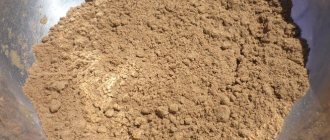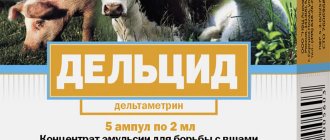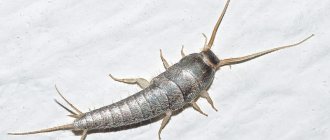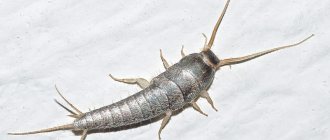In order to increase the weight of the animal, bulls are often castrated in meat farms. It is advisable to do this while the animal is still young. In this case, surgery is easier and more painless. Adults after removal of the testes may suffer for a long time or develop complications. There are other indications for this operation. When it comes to a specific disease, they no longer look at the age of the cattle, but simply provide the necessary assistance.
Pain relief
Young animals under one and a half years of age do not need anesthesia before surgery. For older bulls it is mandatory. Anesthetic medicine is injected into the spermatic cord and the wall of the scrotal area along a cut scar. The scrotum next to the neck is firmly grasped with the fingers of the left hand and pulled back a little. You need to feel the location of the spermatic cord through the skin.
You won't need a syringe at first. A thin needle is taken, it should be used to pierce the back of the neck, the needle tip should reach the spermatic cord in such a place that the testis is 7 or 12 centimeters lower. If blood begins to ooze from the needle, you need to stick it in deeper, but you can pull the needle back until the bleeding stops.
To make it more convenient and safer, the syringe and needle are connected with a thin rubber tube. For each cord, a four percent novocaine solution in an amount of 5 milliliters is required. The tissue of the cut lines is infiltrated with a novocaine solution of 0.25 or 0.5 percent.
Castration loop: algorithm of actions
The castration loop is an important step in such an operation as sterilization of bulls. It is necessary to follow the rules so that the procedure goes without problems and the wound heals without complications. The algorithm of actions is as follows:
- loop a silk thread around the appendage;
- circle the end of the thread near the tail of the appendage again and lower it into the first loop;
- tighten the thread until a white edge is formed;
- make a third loop for insurance;
- cut off the appendage and testis below the place where the knot is tied;
- Cauterize the cut-off site with iodine solution;
- After making sure that the incision has stopped bleeding, cut off unnecessary threads;
- sew up the incision and treat the edges of the wound with iodine solution.
After completing the operation, it is recommended to treat the perineum with terramycin or streptocide. Both medications must be placed inside the wound.
Why is castration of males necessary?
On the one hand, it may seem to an uninitiated person that this procedure is harmful, from which the cattle breeder has no benefit. Well, in fact, is it necessary to castrate sheep if the farmer’s main goal is to constantly increase the number of herds?
The answer will be in the affirmative - it is necessary! And the reasons explaining why rams are castrated are as follows:
- The meat of unbred males (bulls, boars, goats, rams and other animals) acquires a specific flavor after they reach puberty.
- A castrated sheep gains weight faster and stores fat better. Moreover, to fatten it, less strong feed is required, which, in turn, is much cheaper.
- Thanks to emasculation, animals lose interest in fighting among themselves, become calmer, and are not aggressive towards humans.
- The owner does not have to bother with allocating the males a separate room and pasture from the females: now the sheep are not in danger of unwanted fertilization.
Pros and cons of sterilization treatment
Some diseases of the genital organs in male cattle cannot be treated. And, if the bull is not castrated in a timely manner, he may simply die. Veterinarians recommend this option only in extreme cases when other treatment methods no longer work.
If a breeding bull becomes seriously ill, this is a big nuisance for the breeder. The owners have to completely change their plans for him, since this specimen will no longer be able to participate in breeding. In such cases, a decision is made to sterilize the animal. However, this is not always a disaster, as it might initially seem.
A castrated individual can be fattened for meat and thereby cover the costs of a new stud bull. Thus, farmers have the opportunity to inject “new blood” into the herd, which is a plus.
Surgical method of castration
Castration is carried out surgically, in an open way (i.e. with incision of the vaginal membrane).
First you need to choose the time for the operation. It should not be hot outside, as this will contribute to the development of infection in the animal. Also, castration of bulls is carried out, the sooner the better. After the eighth month, there is a risk that the bull will lose weight after the procedure. This will negatively affect meat productivity.
Castration is performed surgically
To carry out this operation we will need:
- scalpel;
- silk thread (it is advisable to dip it in iodine before surgery);
- a piece of gauze;
- tincture of iodine 5%;
- a bucket of water;
- razor;
- latex gloves (you can do without them, but your hands need to be thoroughly disinfected, nails trimmed, and the nail bed treated with alcohol tincture of iodine).
First of all, we tie up the mother of the bull, as she can become restless and cause you inconvenience. Then we move on to the bull itself. You can throw him on his side or castrate him while standing.
In the first case, you will need two assistants: one holds the head (if the bull raises it, he can kick you!), the other assistant pulls the hind limb, which is on top, towards the head and fixes it securely with a rope.
Wash your genitals thoroughly with soap and water. It is advisable to take warm water so as not to worry the animal again. The surface where we will make the incision is carefully shaved with a razor and treated with an alcohol tincture of iodine. We stretch the skin of the scrotum.
The incision is made parallel to the suture of the scrotum, closer to the base. It is done from the abdomen (so that dirt from the infection does not get into the wound). We take a scalpel and in one sharp movement we cut through the skin and the general vaginal membrane.
The incision should be large enough to allow the testis to come out. We stretch the testis as much as possible (at this time the animal may be very worried). We free the spermatic cord from the tunica vaginalis, cut the transitional ligament (what attaches the white tunica vaginalis to the testis).
We place the castration loop as far as possible from the testis. It's done simply:
- Take the thread and draw it around the appendage so that a loop is formed.
- Then circle the end of the thread near the tail of the appendage a second time, lower the end into the first loop, and tighten until a white edge appears.
- On top, for your own peace of mind, throw another knot (to be sure, you can also place a surgical loop a little higher).
- Then the appendage with the testis is cut off 1.5 cm below the node. The thread should remain in your hands, with a knot on the stump.
- We cauterize the stump with iodine. After making sure that the stump is not bleeding, cut off the unnecessary ends of the threads. At this time, the stump should quickly hide inside.
- You don't stitch the wound. The edges of the wound are treated with an alcohol solution of iodine.
The same procedure is repeated with the second testis.
After the procedure, you can treat the perineum with Terramycin (be sure to spray it inside to avoid infection). If you don’t have Terramycin on hand, you can add 1 tbsp to each half. streptocide and knead thoroughly, squeezing out the remaining blood. After this, the bull can be released.
It is necessary to ensure that flies and gadflies do not land on the wound, in order to avoid the appearance of parasites in the wound. Insects can introduce infection into the wound. It is best to use insect repellents. The old litter is removed, and it is better to cover the floor with sawdust.
The animal should be monitored for three days for signs of inflammation. Drip bleeding for 2-3 days is normal. In case of swelling, jet bleeding, severe inflammatory reaction, you should immediately call a veterinarian
You should also pay attention to the animal's appetite
Surgery process
After the preparatory procedures have been completed, the operation itself begins. Armed with a scalpel, you need to make an incision near the base on the side of the abdomen. It is important to make a sharp and deep enough cut to capture both the skin and the membrane. It should be of such a size that it is convenient to remove the testis.
After the incision is made, the testis is pulled out to its maximum possible length. Carefully peel off the casing. Now all that remains is to cut off the transitional ligament and make a castration loop.
It is important that the loop is located as far as possible from the testis. A similar procedure is performed with the second testicle.
Keep in mind that a beginner should not carry out the operation on his own. It should be done by a veterinarian or livestock breeder with similar experience. A person who does not have such experience can only act as an assistant carrying out the doctor’s orders.
Necessity of the procedure
A bull and an ox - what is the difference between them, we thus found out. But why is castration carried out on farms? Most of the bulls kept on livestock farms are subjected to a similar procedure. Only producers with good breed qualities are not castrated on farms. Such bulls are left for breeding and are used in the future for mating with cows in order to obtain high-quality offspring.
Castration of meat animals allows, first of all, to achieve an increase in productivity in terms of meat yield. After this procedure, the character of the bulls changes significantly. They become calmer, eat better, and therefore gain weight faster.
Since castrated bulls are generally docile, they are much easier to care for than sires. This, of course, can also be attributed to the advantages of such an operation.
Farmers believe that another undoubted advantage of castration is that in this case it is possible to completely control the productivity of the herd in terms of producing offspring. Oxen simply do not have the opportunity to accidentally cover cows, for example, in a pasture.
The advantages of such intervention, of course, include improving the quality of bull meat. In uncastrated animals it has a specific, not very pleasant odor. This is especially true when it is cooked hot. In castrated bulls, the meat is soft, juicy, tender and does not have any unpleasant odor.
Indications
The main reasons for castration are to correct the behavior of bulls and improve the quality of meat. Castrated bulls (oxen) do not show interest in females; they are calmer and have increased endurance. Before the advent of agricultural machinery, such bulls were widely used as draft power when plowing land and performing other types of agricultural work.
When keeping a large herd, castration is necessary to maintain the quality of the herd and prevent the appearance of offspring from weak and low-breed bulls. In addition, castrati are easier to control when grazing and when kept together with other bulls.
Another reason for castration is to improve the taste characteristics of meat. After removal of the testicles in bulls, changes in hormonal levels and metabolic processes occur. Due to this, the meat of adult bulls contains more fat, from which numerous fatty layers are formed. As a result, a cut of beef resembles a marble pattern in appearance. Marbled beef is highly valued by gourmets around the world for its exceptional tenderness and juiciness.
Much less often, the reason for castration of bulls is medical indications: tumors and other diseases of the testes. Castration can also be carried out to prevent sexual trauma in bulls, collagenosis during intensive fattening, D-hypovitaminosis and other diseases.
Removal of reproductive system organs in cows in veterinary practice is much less common than similar operations in bulls. Sterilization is used to quickly gain weight, prolong the lactation period in females unsuitable for reproduction and in the presence of medical indications
Postoperative period
Care after the intervention depends on how the castration was carried out. If percutaneous methods are used, bulls are examined 30-40 minutes after the procedure. After elastration, a decrease in scrotal temperature is considered normal. Complete death of the testes in bulls occurs within 20-30 days.
In case of crushing of the spermatic cords in bulls using a closed method, a hematoma is formed at the site of application of forceps, which is palpated through the skin. The success of castration is indicated by a decrease in the size of the testicles and a change in their density. If after 1-1.5 months this is not established when examining the bulls, a repeat operation is performed using the open method.
Castration with removal of the testes requires more attention
During the postoperative period, bulls must be kept dry and clean, and daily inspections must be carried out, paying special attention to the condition of the wound. If mucus, bloody or purulent discharge appears, you should seek medical help as soon as possible.
Contraindications
Before the operation is performed, all calves, calves and adult bulls intended for castration are carefully examined: the general condition is determined, the degree of development of the testicles and their location are determined. Sick, emaciated or weak males should not be interfered with. When selecting bulls, one should also take into account contraindications such as the animal being too early or too mature.
Castration is not carried out during the vaccination period of the herd: operations are not scheduled 14 days before preventive vaccinations and within 10-14 days after the vaccine is administered to bulls.
How is the operation performed?
Photos of castrated bulls are presented on the page. As you can see, the animals are in most cases large and healthy. However, in order not to harm the bull, such intervention, of course, must be carried out correctly.
Before castration, hair is removed from adult animals on the surgical site. In young bulls, the hair in this area is usually sparse. Therefore, such a procedure is optional for them. At the next stage:
the surgical field is treated with a disinfectant material, for example, an alcohol solution of iodine;
give the bull pain relief with novocaine (3% 10 ml);
grab the animal’s scrotum together with the testis with the left hand and move it back;
the scrotum is dissected along the greater curvature of the testis, 1.5 cm away from its suture;
pull the testis out of the scrotal cavity and dissect the transitional ligament;
the mesentery is ruptured and a ligature is applied to the thinnest section of the cord;
cut the cord with scissors, stepping back from the dressing by 1.5 cm.
At the final stage, during open castration, blood clots are removed from the bull’s scrotum, and the wound is powdered, for example, with streptocide. Sutures are not placed on wounds during this operation.
Preparing bulls
Reviews about castrated bulls from farmers are, of course, in most cases positive. Such animals, with lower feed costs, gain weight much faster, get sick less often and do not cause their owners any inconvenience in terms of care.
Actually, the castration procedure itself is not too complicated. In any case, it is safe for the health of the animal if all required technologies are followed. However, it is, of course, imperative to prepare the bull for such intervention. Before castration:
the animal is carefully examined to identify any diseases;
determine the size of the bull's testes;
keep the bull on a starvation diet.
Animals are not fed for 12-14 hours before castration. During this period, bulls are given only water. Before the operation itself, the animal is driven outside for a while. The bull must empty his intestines and bladder.
What is a castrated sheep called?
Somewhere it came to be that the word “dude” has something to do with a pet. In fact, this is not true at all. And in all dictionaries a castrated ram is called valakh or valukh. Sometimes the name “valushka” is added to this series.
Although sometimes a castrated ram is called “castrated” or “laid out,” which is also correct. This is the name given to a male who has lost the ability to cover females due to surgery or other veterinary procedures. Depriving an animal of this natural ability is called “castration” or “emasculation.” Sometimes people use the expression “lay out the ram” in this case.
Why were people castrated in the past?
The history of castration of people dates back to the eras of the Ancient World and the Middle Ages. Thus, in Muslim countries they prepared eunuchs devoid of carnal desire - devoted servants, guardians of the harems of sheikhs, sultans, and caliphs. According to historical sources, the sale of castrated slaves was a very profitable business in eastern countries. The price of a eunuch slave was many times higher than the price of an ordinary slave.
In the Roman Empire, Ancient China and a number of other states, castration was used as torture to deal with state criminals and prisoners. So, in the 1st century. BC, the famous Chinese historian Sim Qian was sentenced by court to emasculation for insulting the emperor.
When going to war, the ancient Scythians, along with other weapons and ammunition, always took with them a small sharp sickle. They castrated prisoners with it. On surviving ancient Egyptian bas-reliefs you can also see scenes of castration of those captured. Captives, rapists and adulterers were punished in a similar way in ancient Greece, Rome, Mesopotamia, and Assyria.
In Russia, voluntary castration was practiced by the sects of eunuchs - adherents of the Old Believers. According to the beliefs of the eunuchs, the only way to purify the spirit, tame the flesh, and counteract unnecessary temptations and the fall was “whitening,” that is, conscious castration, or self-castration. The sectarians preached a special view of the eternal postulates of the Gospel, interpreting them to suit the beliefs of the sect.
Also, preachers of sectarian communities found “justifications” for voluntary castration in some other quotations of the Holy Scriptures. In order to preserve the sect and attract new co-religionists, the eunuchs castrated their young relatives; ransomed serfs (castration was an indispensable condition); persistently promoted “whitening” among young people; membership in the sect was passed down by inheritance. Separate sects of eunuchs have existed since Antiquity, but became widespread during the reign of Peter I.
At first, castrating eunuchs involved removing the testicles along with part of the scrotum. These organs were simply annealed to members of sects with a hot iron. The savage rite was called “fire baptism.” Later, various kinds of cutting instruments were used for castration, and cauterization was used to stop bleeding and disinfection.
The scar on the healed wound was shaped like a horseshoe. The eunuchs called it “the first seal” or “the first whitening.” Over time, sects began to practice more radical interventions. Since after the removal of the testicles the eunuchs only lost the ability to reproduce, but were still able to engage in sexual intercourse, many convinced sectarians decided to amputate the penis. The scars left behind were called the “second seal.”
Women included in the Skoptsy communities were often subjected to “whitening.” They had their labia removed, and sometimes the clitoris and nipples on the mammary glands. This, of course, reduced their sexual attractiveness, but did not in any way affect their ability to bear children. According to historical research, there are cases when castrated women, for one reason or another, left the eunuch sects, after which they successfully got married and had children.
Bloodless methods of emasculating lambs
There are two known today. The first is produced using a special device called burizzo. It is used for both tail docking and castration.
Using burizzo, the skin and flesh along with the testicles are compressed. Thanks to this action, they bleed and dry out. It can be considered positive that it allows you to avoid infection of open wounds and tetanus infection of the animal. The negative side is that the procedure is quite painful and takes a long time.
Rubber rings are also a bloodless method. This procedure can last from 10 to 20 days.
Sometimes sheep farmers use rubber rings for shortened castration, when they only tighten the skin of the scrotum without capturing the testicles. This process is less painful. But the desired result is achieved, since the raised testicles cannot participate in the fertilization of females.
How to castrate pigs? Existing methods
Procedures of the first type provide emasculation of males and females without direct intervention in the animal’s body and without damaging its skin. Such techniques include:
- chemical castration of males;
- mechanical quenching:
- radiological technique (using x-rays).
An important point when choosing a method is the answer to the question - how much does such a procedure cost?
Such methods, in turn, are divided into open and closed interventions.
Open interventions
The most common methods of emasculation of piglets of different ages. To immobilize an animal, depending on its weight, either a special machine or any other immobilization method is used.
Castration for ligature
Having immobilized the animal in any available way, the stubble on the scrotum is trimmed and the surgical area is treated with a special solution. Anesthesia is not used. With the thumb and forefinger of the left hand, grab the testis, pull back the skin of the scrotum slightly and make two incisions on either side of the suture, keeping an indentation of about 1 centimeter. They expose the testis, take it out, pull it out by the cord and apply a strong ligature. Below the dressing, the testis is cut off, the stump is treated with iodine, the wound itself is sutured and treated.
Method of breaking the spermatic cord
This technique is used for piglets aged 10 to 20 days. The technique is similar to that described above, with only one difference: the spermatic cord is pulled up and twisted over and over again until it is completely separated. A sharp break is possible, but then preliminary fixation of the cord with a special clamp is necessary. The postoperative wound should be treated with antiseptic drugs.
Closed castration of boars
The procedure is performed no earlier than two months before slaughter. You should not forget about the two-week break between the operation and preventive vaccinations.
Age
Puberty in lambs occurs on average at 6 months. In some early maturing breeds, signs of puberty may be observed even earlier. The optimal period for removing the testes occurs 3-4 weeks before the completion of the development of the genitourinary system. The minimum acceptable age for castration of lambs is 3-4 months. Intervention carried out earlier than the specified period can cause significant disturbances in metabolic processes and cause growth retardation in comparison with sheep not subjected to intervention. If rams are castrated after maturity, behavioral sexual responses may persist for some time.
READ ALSO: Choosing cherries for Central Russia, review of suitable varieties
Adult males that have become unsuitable for breeding work are operated on several months before slaughter, during which the male is fattened and the meat loses its specific smell.
To prevent possible complications, mass castration on farms is recommended to be carried out in the autumn or spring months. Low air temperature and the absence of insects carrying pathogens reduces the likelihood of bleeding, inflammatory processes and other pathological conditions.
Points for and against
To make a final decision regarding castration of bulls, it is necessary to weigh all the pros and cons. Castration affects the body structure of bulls, but does not provide a significant difference in weight compared to males that have not undergone surgery. The main difference is observed in the quality of meat: in bulls that have undergone castration, it is fattier and, accordingly, higher in calories. If steers are raised for lean beef and are planned to be slaughtered before 18-20 months of age, intervention is not worthwhile.
The second purpose of bull castration is behavior correction. In cases where 1-2 bulls are raised on an individual farm, and they are planned to be kept in a stall without grazing, there is no great need for the procedure.
pros
After castration, bulls become calmer and more manageable, and are also incapable of fertilizing cows, which is important when keeping large livestock. The meat obtained from the slaughter of such males has improved taste and is more expensive than regular beef tenderloin. When keeping bulls on an industrial scale, removing testicles is one of the ways to increase the profitability of production.
Minuses
The most significant disadvantages include the possibility of developing complications after the intervention and slowing down the growth of bulls in case of violation of castration deadlines.
Differences between a gelding and a stallion
Having figured out what a castrated horse is called, you can move on to the differences. In appearance they are not noticeable, except for the absence of some part of the body. But they are very different in habits and characteristics.
Hanoverian foal
Main purpose and character traits
The main task of a stallion is to become the father of offspring. They are used to improve the quality of the pedigree during breeding. Animals have a tough temperament and often do not obey. Aggression towards other individuals in the herd is possible.
A gelding is a horse that, for various reasons, is not suitable for procreation and has been castrated. His further destiny is participation in competitions, agricultural and production work. Character is what distinguishes a horse from a gelding. The sterilization carried out makes the horse calm and balanced, he has a peaceful character.
For show jumping, castration of stallions is a fairly important procedure. Geldings show better results due to greater volume of muscles in the front part of the body
They are more maneuverable. Also, castration of a horse allows you to reduce the required dose of feed, since metabolism is significantly reduced. A gelding and a stallion have differences in the required physical activity. The difference lies in constant work with the gelding, otherwise he will swim with fat.
Horse in the saddle
Making oxen from bulls
Ox is a common name for castrated bulls, which is still considered relevant today. Some time ago it was impossible to do without oxen on the farm, because with their help all the heavy work was done. Harnessing ordinary bulls and forcing them to work in the fields is quite difficult, because such animals have a tough temperament.
For this reason, only castrated individuals were taken for heavy work. These animals are calmer, listen better to the owner and can work longer than bulls who have retained their reproductive function. And farmers preferred not to bring breeding bulls into the fields, whose main function was to fertilize cows.
Currently, “ox labor” has been preserved on small farms. Today, farmers castrate outbred animals, because using an ox to transport goods over short distances is much more efficient than using a tractor or truck.
Methods
Castration of lambs and adult males is carried out using several methods. At a young age, preference is given to percutaneous methods; at a more mature age, open surgery is used.
Open way
Open operations involve making transverse incisions in the lower part of the scrotum or cutting off its bottom. Due to the low prolapse of the scrotum and sclerosis of the skin during castration of rams, longitudinal incisions are not recommended. In this case, there is a high probability of accumulation of blood clots in the cavity with the subsequent development of infectious inflammation.
Before making the incisions, anesthesia is drawn into a syringe and injected in several places of the surgical field. If it is necessary to castrate old rams, the concentration is increased.
The testicles are removed through the incisions, the spermatic cords are tied with a ligature or pinched with forceps, and the resulting wound is covered with an antiseptic. For large wound surfaces in adult sheep, it is recommended to insert a piece of gauze soaked in iodoform or antibiotics into the cavity.
In a closed way
In most cases, bloodless castration is used to castrate lambs or young rams. To carry out such procedures you will need a special tool.
Bloodless methods include:
Compression of the scrotal neck (elastration).
The essence of the intervention is to put an elastic band on the scrotum of lambs as close to the abdomen as possible. As a result, blood access to the testicles is stopped, they gradually decrease in size and die. In lambs and young rams, this process takes 2 to 3 weeks. To carry out the procedure in a closed way, an elastrator is used. It is used to stretch tight rubber rings into which the scrotum is threaded.
It is not recommended to castrate adult rams using this method, since due to the large amount of connective tissue, the neck is not compressed tightly enough with an elastic band. The difficulty lies in the fact that after reaching 6-7 months, the testes of rams increase in size so much that it is quite problematic to pass them through the ring.
This method is considered the most gentle, since the rubber rings cut off the blood supply to the nerves, and after 20-30 minutes the lambs stop feeling discomfort.
Crushing of the spermatic cord.
This method is also only suitable for lambs or young rams. To destroy the vas deferens of sheep you will need special forceps. The duration of its retention on the cord and the possible need for repeated use depend on the model of the instrument.
To carry out the procedure, the rams are placed on their backs and the testicles are retracted to the bottom of the scrotum. The forceps are applied to the cord as close to the testis as possible and sharply squeezed until it crunches. After 3-4 weeks the rams are examined. If the testicles have not decreased in size, repeated intervention will be required, but in an open way. With successful intervention, complete death of the testicles occurs within 5-6 months.
Crushing of the testicular parenchyma.
The most suitable method for sheep, which, however, is not widely used due to the painfulness of the procedure and the high probability of restoration of the testes. The method involves destroying the testicles by squeezing them between the rounded jaws of the forceps. The tool is selected depending on the age of the lambs, since the size of the testicles increases noticeably over time. After squeezing, the tissue should be loose without compaction.
Before castrating sheep, it is necessary to weigh the advantages and disadvantages of each method, and choose the one that will have the least negative health consequences.
How bulls are castrated
There are several ways of carrying out manipulation, which can be bloody or bloodless, as well as using a new method - chemical castration.
Open (bloody) method
After the bull has been secured and the surgical field has been prepared, all layers of the scrotum are cut. For young bulls, a transverse incision is made; for adults, the scrotum is opened from the side or in front, along the testis. The testis is cut along its entire length, opening the common vaginal membrane. The testis is removed, after which it is necessary to proceed to cutting the thickened part of the transitional ligament and separating the common tunica vaginalis from the spermatic cord.
Important! To use open castration for bulls that are over 2 years old, it is necessary to use local anesthesia.
A strong silk ligature is applied to the thinnest part of the spermatic cord, at a distance of about 10 cm from the testis, and then tied with a surgical knot. Below the ligature, 2 cm, the spermatic cord is cut using scissors. The stump is lubricated with 5% iodine, the wound is treated with antiseptic powder.
You can perform castration with forceps using an emasculator; for this, using a side incision in the scrotum, the spermatic cord is removed out, followed by applying forceps to it and holding them in this position for 5 minutes to prevent bleeding. After the manipulation, the testicles are removed from the scrotum.
Closed (bloodless) method
The closed method of castration is the most common for young bulls and calves. This method involves destroying the vas deferens without removing the testicle. The simplest option is to use an elastic band (elastator) to compress the neck of the scrotum. The main advantage of castration with a rubber ring is that the procedure is painless and there is no open wound.
Closed castration can also be carried out by bloodless sterility of bulls due to subcutaneous crushing of the spermatic cords, for which Burdizzo forceps are used. This device is applied above the testes, compressed to a characteristic sound and held for half a minute. Thanks to this method of castration, blood flow to the testes is stopped and their gradual atrophy occurs.
Video: bloodless castration
Chemical castration
This method of castration consists of using a solution of formalin 5–10% and novocaine 0.5%–2%. The solution is administered in an amount of 5 to 10 ml in each testis, using an injection. At the moment, the method is called ineffective and manipulations must be repeated every 6 months throughout life to block the work of the testes. There are also studies that show that about 20% of animals subjected to chemical castration continued to produce male hormones.
Find out what kind of animal an ox is, how to raise a bull for fattening, and which bull is the largest in the world.
Bloodless methods of castration
Also, castration of bulls is carried out using a bloodless method (subcutaneous method), which significantly reduces the risk of infection and parasites. This type of castration can be carried out in hot weather.
Crushing the spermatic cord using forceps
This procedure is carried out using Burdizzo, Telyatnikova, Amosov forceps.
This procedure is carried out using Burdizzo, Telyatnikov, Amosov or Khanin-Tanybekov forceps. The essence of the operation is to disrupt the conductive function of the spermatic cord:
- After palpating the spermatic cord, forceps are placed on the neck of the scrotum.
- The spermatic cord is pushed to the outer wall of the scrotum, placed between the jaws (pinching surfaces of the forceps) and crushed by bringing the handles together. To carry out the procedure with certainty, it is recommended to reapply the forceps after 2.5 cm.
We do the same with the second spermatic cord.
After 2-3 weeks, the testes atrophy (this is noticeable by a decrease in their size).
The disadvantage of this procedure is that it is quite difficult to carry it out on your own the first time. You may not completely compress the spermatic cord and a complication will arise.
Rubber ring application
There is also another bloodless method of castration - placing a rubber ring on the scrotum. Numbness sets in within a few minutes. After some time, the nutrition and innervation of the testes (and the scrotum as a whole) is completely disrupted; they atrophy and disappear.
The disadvantage of this procedure is that there is a risk of contracting tetanus due to the atrophying, dissecting scrotum. Among the advantages of the operation, we note that this procedure can be carried out in hot weather, the animal’s pain is short-lived and minimized.
As we can see, all castration methods have their pros and cons. The procedure itself also has negative aspects. This is stress for the animal, all sorts of complications, a decrease in meat productivity, the risk that you will carry out the procedure incorrectly, or miss aseptic and antiseptic measures.
The decision whether to undergo surgery or not remains entirely yours.
The decision whether to have surgery or not is entirely yours.
If you nevertheless decide on this procedure, it is better not to risk it and call a veterinary specialist at home. The veterinarian will castrate your bull quickly, efficiently, and, most importantly, safely.
Castration of a male dog: cons
If people were confident in the beneficial effects of castration on a pet’s body, this operation would be performed much more often. But the fact is that castration of a male dog does not have any negative effects. There are some things that still confuse me though:
Tendency to obesity
The male sex hormone (testosterone) is a powerful fat burner that accelerates metabolism and supports the growth of muscle rather than fat tissue. After castration, testosterone levels decrease, which increases the dog's tendency to become obese. Plus, the male stops chasing females in heat, refusing to eat. He does not sit for a week in a row in front of someone else’s entrance, where the “lady of his heart” lives.
I often meet fat, uncastrated males. And even more often – slender, athletic, sterilized dogs. The secret is that fat does not come from thin air! It is enough to feed the dog correctly so that castration does not affect the weight in any way.
A castrated male gets fat for the same reason as a fertile male. The owners feel sorry for him and slip tidbits from the table, without devoting time to active games and walks.
Diet and an active lifestyle allow your dog to stay in shape after castration.
Operational risks
If a veterinarian says that castration of a male dog is an absolutely safe procedure, he is lying. At a minimum, the operation is performed under general anesthesia, and this is a certain risk. Errors during the operation cannot be ruled out, although an experienced surgeon practically never makes them. We are talking about bleeding that occurs if a ligature comes off a vessel feeding the testis.
Bleeding can also occur from skin vessels. At risk are dogs with bleeding disorders. There are hereditary diseases, such as von Willebrand disease, which can cause your pet to bleed to death. If the breed is at risk, like Bernese Mountain Dogs, a genetic test should be done before surgery.
Before castration, the animal is not only examined, but also examined. For young male dogs, it is enough to do:
- Cardiogram (ECG);
- Clinical blood test;
- Blood clotting test.
For older animals, the list is expanded at the discretion of the doctor:
- ECHO of the heart (this study does not replace an ECG);
- Biochemical blood test (anesthesia can worsen renal failure);
- Ultrasound of the abdominal cavity, kidneys, prostate.
Anesthetic risks are significantly higher for dogs of brachiocephalic breeds.
The owner must be aware of operational risks - not to be afraid of the operation. And in order to properly prepare for it and choose a clinic wisely.
There are no absolute contraindications to castration. To those who say with a sigh, “ours is too old and won’t survive the operation,” I want to say one thing: old age is not a diagnosis! Options are always possible. If castration is necessary for medical reasons, and the animal has serious heart or kidney failure, Suprelorin is used. This is a subcutaneous chip that releases hormones that block the functioning of the testes.
Read more about chemical castration of a male dog HERE (the article will open in a new tab)
Complications after castration of a male dog
Castration of a male dog is not an abdominal operation (unless we are talking about abdominal cryptorchid). Complications after the intervention are rare. The most common problems:
- Inflammation and suture dehiscence;
- Severe swelling of the scrotum.
Complications are always associated with a violation of the surgical technique or care during the recovery period. These problems are discussed in more detail in a separate article.
Labrador Retriever Doesn't Like a Collar, But It's Necessary
Complications
The most dangerous complications of castration include bleeding. If the ligature is applied incorrectly and the cord is weakly pulled, bleeding may occur from the vessels of the scrotum or the arteries of the vas deferens. For minor discharge, hemostatic drugs are used. Severe bleeding in bulls is stopped by repeated application of the ligature.
After open castration methods, as a result of the use of unsterile instruments or insufficient treatment of wound surfaces, some bulls experience possible complications such as infection entering the wound and the development of inflammation. If the process is not stopped in a timely manner, it can cause blood poisoning and the death of the male.
In the first few days after castration, bulls will experience bruising, redness, and swelling in the genital area. They usually resolve on their own without medication.
Some methods of castrating bulls seem quite easy. In this regard, many who are engaged in breeding cattle on an industrial scale and are constantly faced with the need to defertilize bulls, the question arises: is it possible to carry out such operations on their own? Despite the apparent simplicity of the intervention, especially when using percutaneous methods, castration is a serious procedure and requires both theoretical training and sufficient practical skills.
In cases of urgent need to remove the testes, bulls should undergo DIY training under the supervision of a qualified specialist. It is better if the veterinarian not only explains the theory, but also helps carry out the first operations to gain practical experience. You should not castrate bulls yourself, relying on video materials and articles from the Internet. This can lead to complications and subsequent death of animals.
Before castrating calves or bulls, it is necessary to decide on the advisability of the intervention, choose the most suitable method of carrying out the procedure, weighing all the pros and cons. Successful restoration of bull calves primarily depends on the qualifications and experience of the person who will perform castration. Potential problems and complications in bulls can be prevented by contacting a veterinarian with experience in performing such operations and having the appropriate license.
https://fb.ru/article/407464/kastrirovannyiy-byik-prichinyi-kastratsii-opisanie-protseduryi-naznachenie-i-primenenie-vola-v-selskom-hozyaystve
https://agronomu.com/bok/7979-zachem-i-kak-kastriruyut-bykov.html
How long does the intervention last?
Bloodless methods require very little time - with sufficient practical skills, the procedure takes 5-10 minutes. Infertility of adult bulls using open methods requires more time: usually the duration of castration with preliminary administration of anesthetics, removal of testicles, application of a ligature and disinfection of the wound takes about half an hour.
It is only possible to determine how long castration lasts approximately, since certain difficulties may arise during the manipulations.
Features of the anatomical structure of the gonads
The shape of the testes is oval, in young ones it is more elongated, and with maturity it becomes rounder. The sizes have a strong age dependence - during the period of mass castration (2-5 months) they usually do not exceed a chicken egg. The body of the testis consists of parenchymal tissue, separated by stroma, and connective tissue. A distinctive feature of rams is the weak development of stroma and the prevalence of parenchyma, which makes the testes less dense and durable.
The seminal appendage is represented by a network of convoluted vas deferens, forming a dense formation. It has separate nutrition due to the vessels of the vas deferens, which is separated from the umbilical branch.
The scrotum is a large skin sac that contains the gonads of the sheep. A specific feature is the low descent of the testes and the formation of a scrotal neck. Layers and shells:
- leather. Relatively thin in young rams, covered with small hair, containing fat and sweat glands, divided by a median suture;
- The muscular layer is a durable membrane connected to the skin and forming separate cavities for each testis. In old rams it contains developed fatty tissue;
- common tunica vaginalis - a layer formed by protrusion of the inner part of the abdominal wall when the testis descends;
- special vaginal membrane - covers the gonads along with the appendage.
How can you cut the scrotum?
The bottom of the scrotum can be amputated with scissors, with a deviation of a couple of centimeters. The method of incision, when a pair of testes becomes visible, is well combined with closed castration; it is convenient to perform this operation on young bulls.
The scrotum can be cut along its bottom transversely to the suture. In another way, several longitudinal incisions are made, which will reach the scrotal floor from below, and as a result, the anterior, posterior and lateral scrotal surfaces are cut.
Why sheep farmers sometimes resist covering females
Often different animals are kept on the same farm. A sheep farmer, for example, purchased individuals of more advanced breeds. But he still has some young stock left from the previous plant. Mixing different breeds of animals is not only pointless, but also harmful.
Some females, being early ripening, are ready for mating at a fairly young age. But fertilization ahead of time will undermine the health of the animal; its offspring may be weak and non-viable.
There is also the danger of covering the ewe with a weak ram. This can also lead to the birth of a low-quality offspring.
To prevent this from happening, the farmer is forced to keep males and females separately. And he also has to allocate pastures for grazing in different places. And this requires attracting additional labor units and financial investments. Therefore, the easiest way out here would be to castrate outbred or simply excess rams. Indeed, for the normal functioning of a herd of 15 sheep, one full-fledged adult ram is quite enough.
Features of castrated bulls
Bulls that have undergone castration are calm, they can be used for agricultural work, and also feed well and produce delicious, tender beef.
It is not advisable to perform surgery in hot and cold weather. It is not necessary to fell young animals before castration. The bull is tied tightly by the horns, one assistant needs to press the area of the nasal septum with his fingers, the other assistant should rest against the lock and press the animal against the wall.
Advice: It is best for fattening bulls to be castrated when they are two or three months old. If bulls will be used primarily for work, castration is carried out at six months or two years of age.
Rewrapped technique
A bloodless method of castration of young or adult bulls. The neck of the scrotal area is trimmed and wiped with an alcohol-containing solution. A castration loop is applied.
Tip: In order to separate the testes, the ligature is tightened using sticks tied to the ends of the ligature. This way the loop is guaranteed to be tight.
Before applying a castration loop, you can apply forceps to the cervical area of the scrotum and squeeze the tissue for 5 minutes. After removing the forceps, a groove is formed, to which a tight ligature is applied. The castration loop is secured like a sea knot. Several days will pass, and the testes will fall off, and the scrotum and ligature will also separate.
General information
Farmers strive to obtain large quantities of tasty, juicy meat from cattle. Products obtained from castrated bulls contain more fat. Such meat has good nutritional qualities and is highly appreciated by consumers. The slaughter yield of individuals subjected to castration always increases by 10-15%. Animals develop more harmoniously after surgery, and the amount of meat in the carcass increases.
At what age are bulls castrated? If you plan to fatten and slaughter the calf, then the ideal time for the procedure is the 3rd month of life. If they first want to use a bull to work on a farm, then animals that have reached the age of 1.5-2 years are castrated. It is advisable to schedule the operation for autumn or spring. At this time, it is easier to care for the wound, there are no insects, and the ambient temperature is quite comfortable.
Castration forceps method
It is better that castration of young animals is carried out using the bloody method using forceps, when the scrotum is carefully cut from the side. The treated scrotum is grasped with the surgeon's left hand, in the place where the skin is to be cut, it is massaged to tighten it. From the side, the scrotum must be deeply cut in length, so as to expose the vaginal membrane.
An incision is needed to remove the testis; an incision is made on it, and the transitional ligament is separated. After exposing the spermatic cord, forceps are applied to it, with the help of which the cord is compressed. The surgeon unscrews the testis. By analogy, the second testis is removed. Sometimes an emasculator is used in the operation. In this method, special sanitation conditions must be observed.
Anesthesia
Young bulls are most often castrated without anesthesia. Older animals require pain relief. For these purposes, veterinarians use chloral hydrate and ethyl alcohol. These drugs have a good analgesic effect on bulls. To prepare a solution per 100 kg of live weight, take 7 g of chloral hydrate and 50 ml of alcohol with a strength of 33%. The veterinarian should have a syringe with him to castrate the bull. The injection is carried out intravenously.
After administering the solution to the animal, it is observed. To test for loss of sensation, a needle is used to prick the bull. Usually, under the influence of anesthesia, the animal calms down and lies down on the ground.
Ligature technique
There are different methods for castrating bulls. The ligature method is closed, and implies that the bull is strengthened in a lying position on its left side. The operation is performed by two or three people. The treated scrotum is pulled back by the upper part until the folds are straightened. The tip is cut off using scissors or a scalpel, and the segment of the scrotum should be no wider than 2 or 3 centimeters.
When the tip of the scrotum is cut off, the first and second testes emerge from it, covering the common vaginal membranes. First, I work with one testis; it must be grabbed using forceps and removed from the scrotal cavity. At the same time, the second hand must dissect, that is, the skin is moved towards the peritoneum, and the ligature is applied to the cord at a distance of 3 or 5 centimeters from the testis.
When the common tunica vaginalis is prepared, you need to use forceps to hold the testis, while at the same time passing the spermatic cord between the fingers of the second hand so that the skin moves to the peritoneum. During the process, the surgeon applies a ligature, which is a castration loop, also called a fisherman's loop. The method was once proposed by Obukhov.
Tip: To prevent the bull from throwing off the castration loop, it is applied tightly, the thread should cut deep into the tissue.
For large bulls, it is recommended to apply a second ligature one and a half or two centimeters from the initial ligature. Before this, the common vaginal membrane is cut circularly, which exposes the spermatic cord, onto which a second ligature is made.
The two ligatures are tied at their ends to prevent the spermatic cord from slipping upward. The second testis is removed in the same way. Castrated bulls are observed for a couple of days. Be sure to lubricate the edges of the postoperative wound. Creolin, iodoform and lysol ointments are suitable for this. The ointment is especially beneficial in summer; the smell repels flies.
On the second day after sterilization, wiring is prescribed a couple of times a day for 20 minutes or half an hour. After a week or 10 days, the bull can be used for work.
What it looks like, origin
This is what an ox is, what it looks like - it should have:
- long and heavy head;
- muscular neck of medium length;
- The withers of an ox should be high;
- The chest is wide, well developed and muscular.
In order for an ox to have a stable and free step, its legs must be straight, thick and bony.
If an ox is fattened for slaughter, then it must have the characteristics of a good beef cattle, for example, it must have a wide rump.
Its meat is more tender and fatty when compared with bull meat.
Important! The ox is relatively easy to train, which allows it to be used more effectively on the farm.











